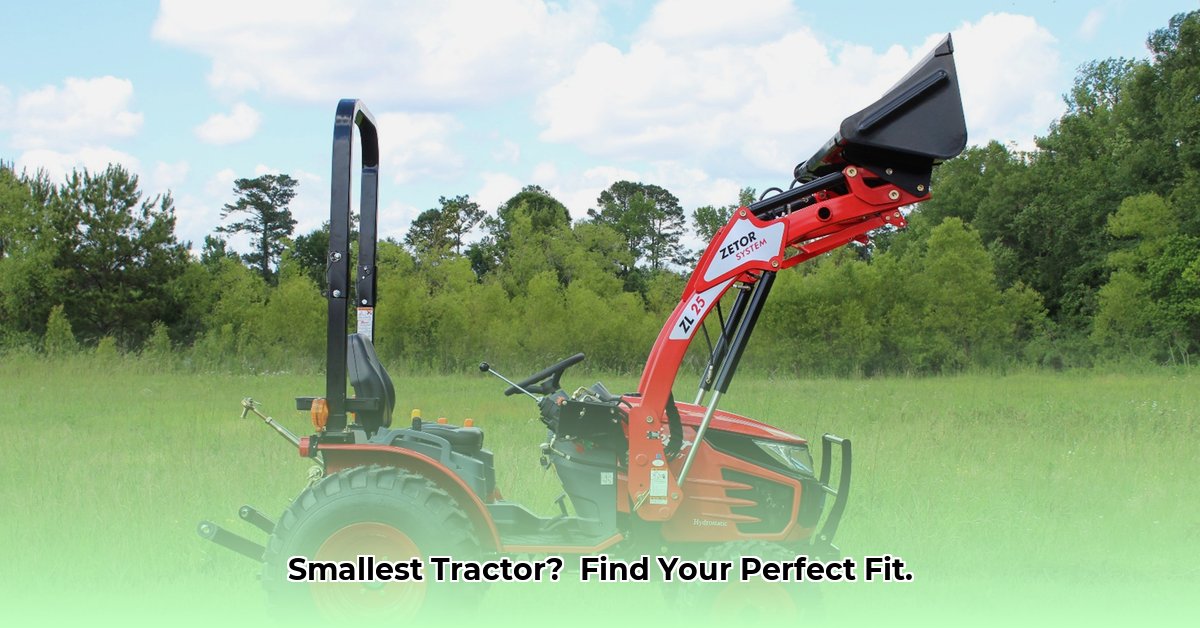
Choosing the right sub-compact tractor can feel overwhelming, but this guide will walk you through the process step-by-step, helping you find the perfect fit for your needs and budget. Whether you're a homeowner, landscaper, or small farmer, this guide caters to all. For more in-depth information on Kubota sub-compact tractors, check out this helpful resource.
Step 1: Assessing Your Needs: Defining Your "Why"
Before browsing models, honestly assess your requirements. This crucial first step ensures you choose a tractor that meets your specific needs.
Property Size: The size of your land directly impacts the necessary horsepower. A small backyard requires less power than several acres. Consider the terrain too—hilly landscapes demand more power than flat ones. Small gardens are easily handled by lower horsepower tractors.
Tasks: What will your tractor do? Mowing, tilling, hauling, snow removal? Each task requires different features and power levels. Mowing a flat lawn demands less horsepower than tilling rocky soil. Consider the different attachments you might need (front loader, tiller, etc.) and the weight they will add to the lifting capacity.
Budget: Set a realistic budget. Consider not only the purchase price but also ongoing costs like fuel, maintenance, repairs, and potentially financing. Unexpected repairs can be costly; save for emergencies. A well-defined budget prevents financial surprises.
Step 2: Researching Models: Feature Comparison
Knowing your needs, research models from major brands like John Deere, Kubota, Mahindra, and Yanmar. Compare key features:
Horsepower: This indicates the tractor's power. More horsepower generally means more capability but higher cost and fuel consumption. Your property size and tasks will help determine appropriate horsepower.
Fuel Efficiency: Consider fuel efficiency, especially for frequent use. Compare EPA estimates or manufacturer claims to find the most economical option.
Transmission Type: Hydrostatic transmissions (HST) generally offer smoother, easier operation, especially for beginners. Geared transmissions provide more control but require more skill. Which is more important for you?
Operator Comfort: Consider features like comfortable seats, good visibility, and easy-to-reach controls. Comfort greatly influences your work experience.
Step 3: Budgeting and Financing: Total Cost of Ownership
The initial price is only part of the cost. Account for:
Maintenance: Regular maintenance is crucial. Factor in costs like oil changes, filter replacements, and potential repairs. Obtain maintenance schedules directly from manufacturers or dealers for accurate cost estimations.
Fuel: Calculate fuel costs based on your anticipated usage. Fuel efficiency ratings can significantly impact your recurring expenses.
Repairs: Set aside funds for unexpected repairs. Extended warranties can mitigate financial risk.
Insurance: Protect your investment with insurance. Inquire about coverage options and costs from your insurance provider.
Financing: Explore financing options if needed. Compare interest rates and loan terms to find the best deal.
Step 4: Choosing Implements: Expanding Versatility
Attachments drastically increase a small tractor's usefulness.
Mowers: Select a mower based on your lawn's size, terrain, and desired cutting width.
Tillers: Choose a tiller appropriate for your garden's size and soil type.
Front-End Loaders: Useful for moving materials, snow removal, and other lifting tasks.
Backhoes: Ideal for digging and trenching.
Compatibility: Always ensure an attachment is compatible with your chosen tractor model before purchasing.
Step 5: Maintenance and Safety: Prioritizing Safe Operation
Proper care ensures your tractor's longevity and safety.
Maintenance Schedule: Adhere to the manufacturer's recommended maintenance schedule. Regular maintenance will help prevent costly breakdowns.
Safety Procedures: Always wear appropriate safety gear and thoroughly understand the tractor's operational and safety guidelines. Consider operator training for enhanced safety.
Step 6: Regulatory Considerations: Local Ordinances
Check local regulations regarding tractor operation, emission standards, and safety requirements. Compliance prevents legal issues.
Conclusion: Making the Right Choice
Choosing the right sub-compact tractor is a significant decision. By following these steps, carefully assessing your needs and budget, and considering the long-term costs, you can confidently select the perfect machine for your tasks. Remember to compare different brands and models based on their features, maintenance requirements, and overall value. Happy tractor shopping!